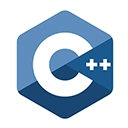C++ is a primary programming language used in the automotive industry, particularly in the development of embedded systems, infotainment systems, autonomous vehicles, and more. Its performance, real-time capabilities, and low-level control make it a suitable choice for automotive applications. In this guide, we'll introduce you to the role of C++ in the automotive industry and provide a sample code example for a simple automotive application.
1. C++ in the Automotive Industry
C++ is a versatile language in the automotive industry for the following reasons:
- Performance: C++ offers the performance needed for real-time control and data processing in automotive systems.
- Low-Level Control: It enables low-level hardware control, making it ideal for interfacing with sensors, actuators, and embedded systems.
- Safety and Reliability: C++ is used for developing safety-critical systems in vehicles, with standards like ISO 26262 ensuring safety and reliability.
2. Sample Code: Automotive Application in C++
Let's provide a simplified code example for an automotive application. In practice, automotive software is complex and often involves real-time operating systems and extensive libraries. Here's a basic pseudocode representation:
#include <iostream>
#include <can_bus_library> // Example library for CAN bus communication
int main() {
// Initialize the CAN bus communication
CanBus canBus;
// Read data from sensors
double speed = canBus.readSpeedSensor();
double temperature = canBus.readTemperatureSensor();
// Control actuators
if (speed > 60) {
canBus.adjustThrottle(80);
} else {
canBus.adjustThrottle(60);
}
// Display information on the infotainment system
std::cout << "Speed: " << speed << " km/h" << std::endl;
std::cout << "Temperature: " << temperature << " °C" << std::endl;
return 0;
}
3. Conclusion
C++ programming is integral to the automotive industry, powering various aspects of modern vehicles, from engine control and safety systems to infotainment and autonomous driving. The provided example is a simplified representation of an automotive application. Real-world automotive software development involves compliance with industry standards, complex real-time systems, and safety-critical considerations.

